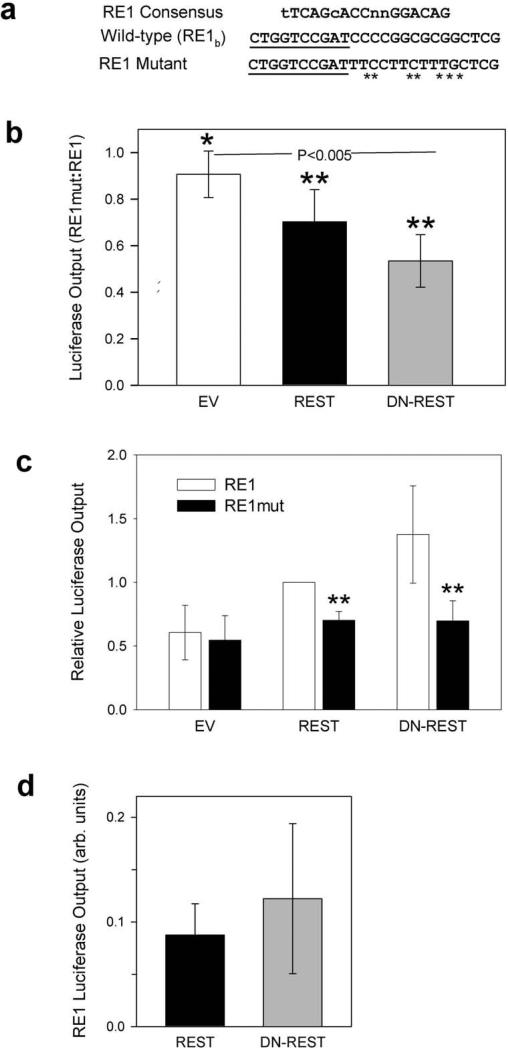Fig 4.
Luciferase reporter studies demonstrate that REST must bind to the RE1b site (Fig. 2) before full DHCR24 expression is achieved. (a) Human RE1 consensus [24] together with wild type DHCR24 (RE1) and mutated (RE1mut) RE1 sequences; mutated bases are indicated by asterisks; the underlined nucleotides mark -196 InvSRE one of the functional sterol response elements (SRE) recently identified by Zerenturk et al. [25] . (b) Relative outputs from luciferase reporter constructs with mutated RE1 depicted in Fig. 4a divided by outputs from reporters with wild type RE1 confirm that mutating RE1b suppresses DHCR24 expression, (all results given as mean ± 95% CI): In these studies the reporter constructs were cotransfected with a control empty vector (EV) or with vectors containing either wild type REST or a dominant negative fragment of REST (DN-REST). Mutating the RE1 sequence (RE1mut) significantly reduced luciferase output to 70 ± 15% (n=8) and 53 ± 11% (n=4) after co-transfection with vectors containing REST and DN-REST, respectively. Mutating RE1 also tended to reduce luminescence from these same promoters to 90 ± 10% (n=3) of their original value when co-transfected with an empty vector (EV) when only endogenous REST was available to upregulate DHCR24. One sample t-test with mean = 1; *P = 0.065, **P < 0.005 that RE1mut and wild type RE1 luminescence are equal (a 93.5% and a 99.5% probability, respectively, that they are different). (c) The same luminescence data shown normalized to the output from the wild type RE1 promoter (RE1) after cotransfection with full length REST. Differences between luminescence from wild type and mutated promoters cotransfected with REST or DN-REST retain their statistical significance but the more subtle changes in the empty vector (EV) results are now submerged in experimental noise. (**P<0.005) (d) The fragmentary polypeptide DN-REST tends to upregulate DHCR24 expression more than does full length REST: Luminescence outputs from wild type luciferase constructs after incubating with REST (0.088 ± 0.030, n=8) or DN-REST (0.12 ± 0.071, n=4), P = NS, REST vs. DN-REST.

